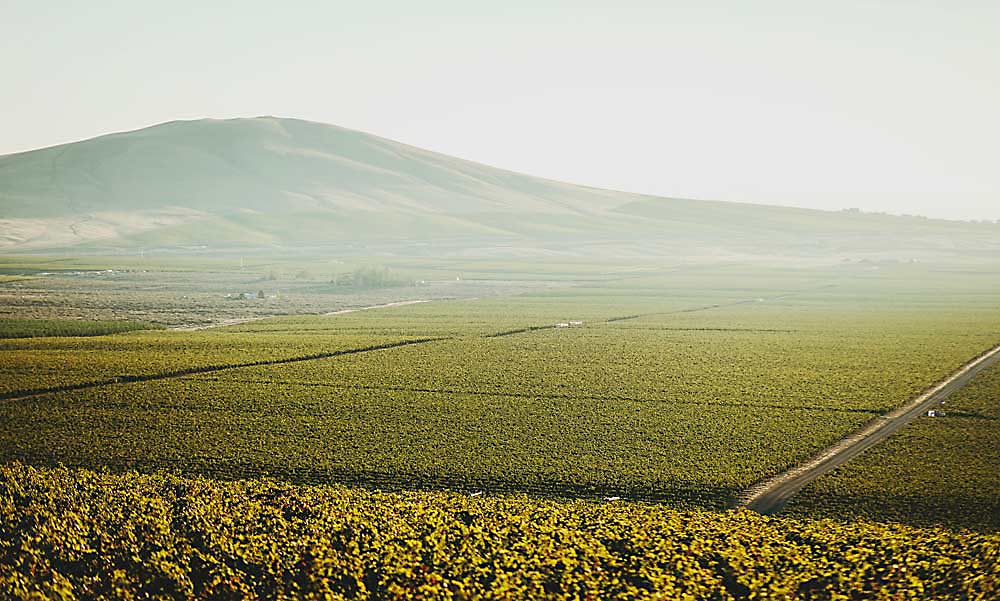
Goose Gap is Washington’s newest American Viticultural Area, according to a news release from the Washington State Wine Commission. The Alcohol and Tobacco Tax and Trade Bureau published the final rule for Goose Gap AVA on July 1, officially defining it as a designated wine grape-growing region.
The Goose Gap AVA contains a total of 8,129 acres, wholly located within the Yakima Valley AVA and the larger Columbia Valley AVA. Goose Gap currently has 1,800 acres of wine grapes split between two commercial vineyards, with 16 varieties planted and the fruit sold to more than 20 wineries.
“The AVA takes its name from a saddle of land known as ‘Goose Gap,’ which was named because it was a flyway for geese between rivers, providing hunters with an exceptional site for hunting,” said Alan Busacca, a former Washington State University soil scientist and geologist involved with the creation of many of the Northwest’s AVAs, including Goose Gap.
Some of the defining characteristics of the Goose Gap AVA include its north- to northeast-facing slopes that lead to less solar radiation and later ripening, compared to other area vineyards on south or southwest slopes, and its Warden series soils made up of wind-blown loess over layered or stratified silts and fine sands from the ancient Missoula Floods — all prized for vineyard production, Busacca said in the release.
To qualify as an AVA, a wine grape-growing region must be distinguishable by features such as climate, soil, elevation and physical features.
“Our family started farming in the Columbia Valley in the early 1900s, and we always knew Goose Gap was a special site,” said Bill Monson, president of Goose Ridge Estate Vineyards and Winery, which is currently the only winery located within the AVA. “This area has a unique microclimate. We often watch rain clouds and fog maneuver around Goose Mountain, avoiding the vineyards planted at the top.”
Goose Gap follows the announcements for The Burn of Columbia Valley and White Bluffs AVAs in mid-June and the September 2020 announcements for Royal Slope and Candy Mountain AVAs.
Beginning Aug. 2, wineries may submit a Certificate of Label Approval (COLA) request for a label using Goose Gap AVA as the appellation of origin.
—by Jonelle Mejica






Leave A Comment